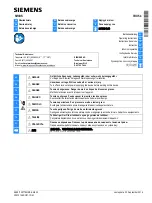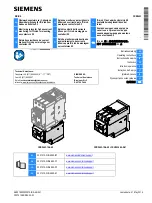
4-2
469 Motor Management Relay
GE Power Management
4.1 OVERVIEW
4 SETPOINT PROGRAMMING
4
4.1.2 RELAY ASSIGNMENT PRACTICES
There are six output relays. Five of the relays are always non-failsafe, the other (Service) is failsafe and dedi-
cated to enunciate internal 469 faults (these faults include Setpoint Corruption, failed hardware components,
loss of control power, etc.). One of the output relays is dedicated as the Block Start relay; it is dedicated to fea-
tures that are intended to block motor starting. The four remaining relays may be programmed for different
types of features depending on what is required. One of the relays, R1 TRIP, is intended to be used as the
main trip relay. Another relay, R4 ALARM, is intended to be used as the main alarm relay. The two relays that
are left, R2 AUXILIARY and R3 AUXILIARY, are intended for special requirements.
When assigning features to R2 and R3, it is a good idea to decide early on what is required since features that
may be assigned may conflict. For example, if R2 AUXILIARY is to be used for upstream trips, it cannot also be
used for the control of a Reduced Voltage Start. Similarly, if R3 is to be dedicated as a relay to echo all alarm
conditions to a PLC, it cannot also be used strictly to enunciate a specific alarm such as Undercurrent.
In order to ensure that conflicts in relay assignment do not occur, several precautions have been taken. All trips
with the exception of the Short Circuit Backup Trip default to R1 TRIP output relay. All alarms default to the R4
ALARM relay. Only special control functions are defaulted to the R2 and R3 AUXILIARY relays. It is recom-
mended that these assignments be reviewed once all the setpoints have been programmed.
















































